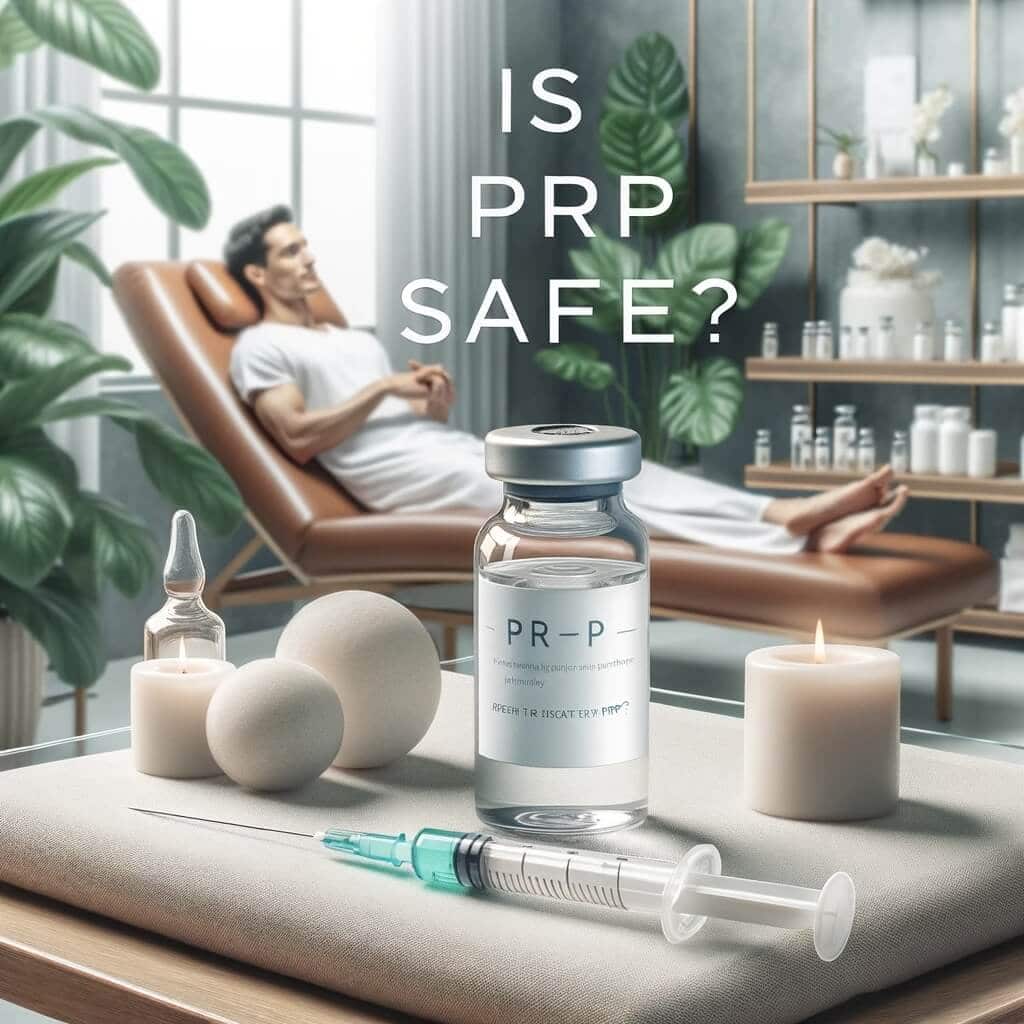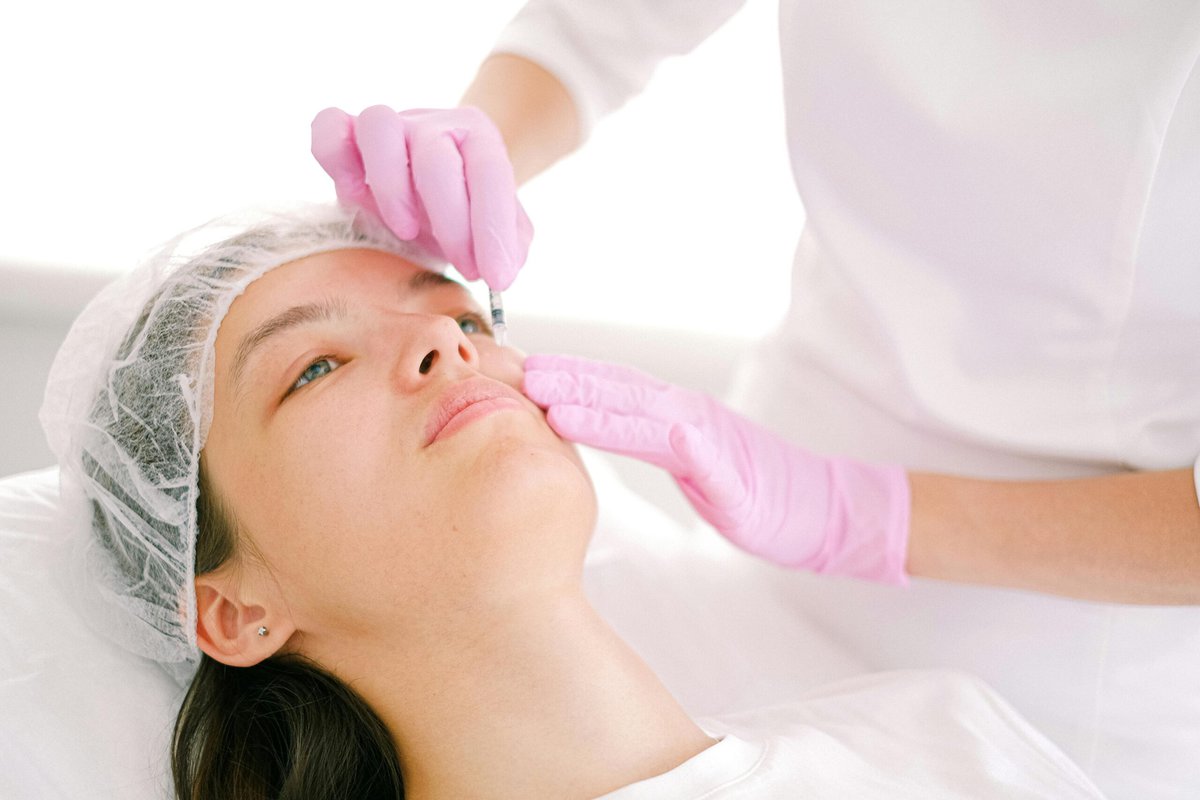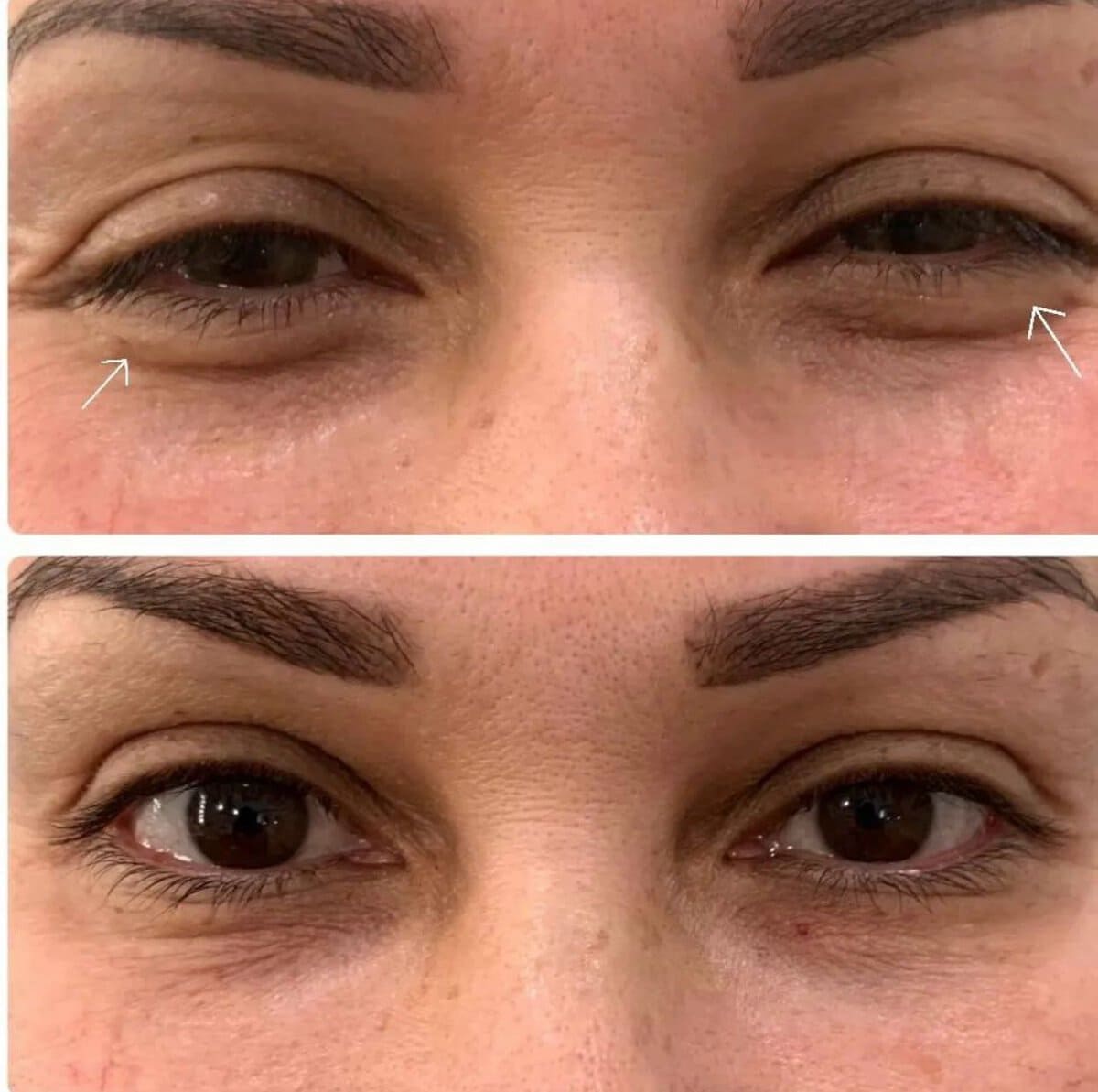Is PRP treatment safe? This question resonates through the buzzing corridors of aesthetic medicine, capturing the attention of adults over 35, a demographic increasingly intrigued by non-surgical ways to maintain their youthful appearance. Platelet-rich plasma (PRP) is a revolutionary therapy that has emerged in recent years., blending natural healing and advanced science. Despite its popularity, many people question the safety of this seemingly miraculous procedure.
PRP treatments spark both awe and skepticism. While some herald it as a panacea for anti-aging, others scrutinize its credibility. This article aims to cut through the noise by focusing on the safety of PRP treatments, especially for those over 35. As you navigate the complexities of aesthetic treatments in a quest to look and feel younger, understanding PRP’s safety profile becomes crucial.
We will explore the science behind PRP, dig into its preparation procedures, and scrutinize clinical evidence to ascertain its safety. Moreover, this article will compare PRP and other aesthetic treatments, arming you with the information you need to make educated decisions. It’s not just about gathering data from a quick Google search; it’s about understanding the intricacies of scientific studies and medical guidelines.
By the time you conclude this article, you will possess comprehensive knowledge about the safety of PRP treatments. With this information, you can consult healthcare professionals confidently and clearly, ensuring you make the best choices for your well-being.
What is PRP?
Platelet-rich plasma, or PRP, is a concentration of plasma derived directly from your blood. Doctors take a small blood sample from you and place it in a centrifuge, a machine that spins the blood at high speeds. This process separates the platelets from other blood cells. Then, they mix the concentrated platelets into the remaining blood to create PRP.
The real game-changer in PRP is the platelets themselves. These small but potent cells release growth factors, proteins, and cytokines, all of which accelerate tissue repair, reduce inflammation, and stimulate collagen production. In aesthetic medicine, medical professionals inject this PRP into targeted areas of your skin to encourage natural healing and rejuvenation.
The versatile nature of PRP extends its application beyond just skin treatments. PRP, short for Platelet-Rich Plasma, is widely used by doctors to treat hair loss and joint pain. It has become a popular choice for various medical fields, including orthopedics, dentistry, and aesthetic medicine. If you are considering getting an aesthetic treatment, especially if you are over 35, it is vital to understand the fundamentals of PRP to make an informed decision about its safety and effectiveness.
Why PRP is Popular Among Adults Over 35
Once we hit our mid-30s, many of us notice the inevitable signs of aging: fine lines, reduced skin elasticity, and perhaps even some graying hair. It’s no surprise, then, that adults over 35 are increasingly looking towards aesthetic medicine to turn back the clock or at least slow it down a little. Among the plethora of treatments available, PRP stands out for several compelling reasons.
Firstly, PRP offers a minimally invasive approach to anti-aging. Unlike surgical facelifts that come with extended recovery periods and potential complications, PRP treatments involve simple injections that require minimal downtime. You can leave the clinic and go about your day, making it convenient for busy adults.
Secondly, PRP utilizes your blood, minimizing the risk of allergic reactions or adverse effects from foreign substances. This autologous nature of PRP is particularly appealing to those who are cautious about introducing synthetic materials into their bodies.
Thirdly, PRP is a multitasker. Not only does it work wonders for facial rejuvenation, but it’s also effective in treating hair loss and joint pains. This makes it an attractive all-in-one solution for adults over 35 who may be dealing with multiple age-related concerns.
Lastly, PRP’s growing popularity benefits from positive word-of-mouth and success stories. Celebrities, influencers, and everyday folks share their experiences, adding a layer of social proof that’s hard to ignore.
As you contemplate whether PRP is the proper treatment for you, consider these factors contributing to its rising popularity among adults over 35. After all, when it comes to aesthetic treatments, safety and effectiveness often top the list of concerns, and PRP ticks both boxes.
The Science Behind PRP
When understanding the safety and effectiveness of any medical procedure, a deep dive into the underlying science is crucial. PRP is no exception. So, what science gives PRP its rejuvenating power, especially for adults over 35?
At its core, PRP leverages the body’s healing mechanisms. Platelets, the stars of PRP, are biological powerhouses that release a range of growth factors, proteins, and cytokines upon activation. These substances initiate and accelerate tissue repair and regeneration.
Growth factors like Platelet-Derived Growth Factor (PDGF) and Transforming Growth Factor Beta (TGF-β) promote cell growth and differentiation. Simply put, they encourage cells to grow and take on specialized roles. This is essential for processes like collagen production, which is crucial for skin elasticity and a youthful appearance.
Cytokines, on the other hand, modulate inflammation. They signal immune cells to promote or inhibit inflammatory responses, providing a balanced healing environment. This ability to regulate inflammation makes PRP useful not just for aesthetic purposes but also for applications like joint pain relief.
Then, there’s the role of proteins such as fibrin and fibronectin, which create a scaffold for new tissue formation. This is vital in wound healing and tissue repair, and it’s the reason why PRP can help with issues ranging from acne scars to orthopedic injuries.
The science behind PRP is rooted in complex biological interactions at the cellular level. As a potential candidate for PRP, especially if you’re over 35, understanding this science can assure its safety and help you make a well-informed decision.
How PRP is Prepared
One of the critical factors that influence the safety of any medical procedure is how it’s prepared, and PRP is no exception. If you’ve found yourself wondering, “Is PRP treatment safe?” you’re likely interested in the specifics of its preparation.
The preparation begins with a simple blood draw, usually from the arm. The collected blood sample then undergoes centrifugation. During this step, a centrifuge spins the blood at high speeds, separating its components based on their densities. This results in a division between red blood cells, white blood cells, and platelets.
Medical professionals then extract the platelet-rich plasma layer, which sits between the red and white blood cell layers. The platelets in this layer are concentrated, forming the basis of PRP. These concentrated platelets are then mixed back into a small amount of the remaining plasma to create the PRP solution used in the treatment.
It’s crucial to note that the preparation of PRP should occur in a sterile environment to minimize the risk of infection. Furthermore, using specialized equipment and trained medical professionals ensures the PRP is prepared correctly, impacting its effectiveness and safety.
So, when contemplating, “Is PRP treatment safe?” understanding the preparation process is fundamental. This closed-loop, sterile technique generally enhances the safety profile of PRP, mainly when administered by qualified healthcare providers.
Mechanism of Action
Understanding how PRP works at the cellular level can provide invaluable insights into its safety and efficacy. So, what happens when PRP is injected into a treatment area?
Upon injection, the platelets in the PRP solution become activated. This triggers the release of numerous growth factors, cytokines, and proteins. These bioactive substances immediately work, signaling cells in the surrounding tissue to kickstart various healing and regenerative processes.
Growth factors latch onto receptors on the cell surface, giving cells the “green light” to divide and grow. This increases collagen production and tissue regeneration, making the skin appear plumper and more youthful.
Cytokines act as messengers between cells, regulating immune responses and inflammation. They help to modulate the body’s natural healing process, ensuring that it proceeds in a balanced and effective manner.
Proteins like fibrin and fibronectin create a scaffolding that supports the growth of new tissue, aiding in wound closure and tissue repair. This not only speeds up healing but also improves the overall texture and quality of the treated area.
It’s also worth noting that because PRP is derived from your blood, the risk of allergic reaction or rejection is minimized. This factor contributes to the general safety of the treatment, making it a viable option for many people pondering its safety and efficacy.
In summary, the mode of action of PRP involves a complex yet well-coordinated series of cellular interactions that promote healing and rejuvenation. These biological processes, combined with the use of a patient’s blood, make PRP a safe and effective treatment option for individuals over 35 years of age who are seeking aesthetic improvements.
Safety of PRP
Regarding aesthetic treatments, one question often stands out: “Is it safe?” For PRP, the short answer is generally “Yes,” but let’s dig a little deeper to understand why.
One of the most appealing aspects of PRP is that it uses your biological material. This autologous approach minimizes risks such as allergic reactions, infections, and tissue rejection associated with treatments using foreign substances. Because it’s your blood, your body is naturally more inclined to accept it without adverse effects.
Another safety feature is the minimally invasive nature of PRP treatments. Unlike surgical procedures that can carry risks like anesthesia complications, significant blood loss, and extended recovery periods, PRP involves only injections. This simplicity often translates to fewer complications and a lower risk profile.
Of course, like any medical procedure, PRP is not entirely without risk. Minor side effects like bruising, swelling, and redness at the injection site are common but usually subside within a few days. Infections are rare but can occur, primarily if the procedure isn’t performed in a sterile environment.
The expertise of the healthcare provider also plays a crucial role in PRP safety. Qualified and experienced professionals are well-versed in the proper preparation and administration of PRP, which further mitigates risks.
While the consensus leans towards PRP being safe, especially for adults over 35 seeking to rejuvenate their appearance, it’s essential to consult a qualified medical professional for personalized advice tailored to your health profile.
Clinical Studies and Evidence
If you like to see complex data before deciding, you’re in luck. Numerous clinical studies have delved into the safety and effectiveness of PRP treatments, giving us a better understanding of their merits and limitations.
Several studies have specifically looked at the use of PRP for skin rejuvenation and found promising results. For instance, a study published in the Journal of Dermatology indicated a significant increase in skin elasticity and hydration after PRP treatment, with no severe side effects reported. These outcomes bolster the general belief in PRP’s safety and effectiveness, particularly for those over 35.
Moreover, PRP has been extensively studied for its applications in orthopedic medicine, wound healing, and hair restoration. Consistent research indicates a low risk of complications, supporting its safety.
It’s crucial, however, to note that not all studies are created equal. Some have smaller sample sizes or need more control groups, which can affect the reliability of their conclusions. Therefore, when considering these studies, it’s vital to scrutinize their methodology and the credibility of the journals where they are published.
In summary, the existing clinical evidence generally supports the safety and effectiveness of PRP treatments. While more comprehensive, long-term studies are always welcome, the data thus far should offer a good level of confidence for anyone contemplating the safety of this aesthetic option.
Common Side Effects
While the prevailing evidence supports the safety of PRP treatments, it’s essential to be aware of the common side effects. Knowing is powerful, and understanding what to expect can help you make an informed decision.
The most frequent side effects are localized to the injection area and are generally mild. These may include:
- Bruising: Caused by the needle piercing the skin, bruising is common but usually fades within a few days.
- Swelling: The treated area may swell shortly after the procedure, but this often subsides within 24 to 48 hours.
- Redness: Some redness is typical, especially in treatments targeting the facial area. Like swelling, this usually resolves quickly.
- Tenderness: The injection site may be tender immediately after the procedure, but this is temporary.
It’s worth noting that more severe side effects are relatively rare but can include infections or allergic reactions. However, since PRP is autologous—derived from your blood—the likelihood of allergic reactions is significantly reduced.
The skill level of your healthcare provider plays a crucial role in minimizing these side effects. A trained, qualified professional will know how to administer the treatment correctly, reducing the risk of complications.
In conclusion, while side effects are possible, they are generally mild and transient, mainly when a competent medical professional conducts the procedure. Knowing what to expect can ease concerns about the safety of PRP treatments.
Conclusion
In the realm of aesthetic treatments, PRP has garnered attention for its promising results and minimally invasive approach, especially among adults over 35. The consensus, backed by many clinical studies, leans towards its safety and effectiveness. While there are mild and generally short-lived side effects, such as bruising and swelling, the overall risk profile of PRP is considered low, primarily when qualified healthcare professionals perform the procedure.
However, it’s crucial to remember that individual experiences may vary. Consultation with a medical professional for personalized advice is the best way to determine if PRP is the right fit for you.
Call to Action
If you’ve been contemplating the question, “Is PRP treatment safe?” the answer generally tilts towards ‘Yes.’ It is always best to consult a qualified medical professional for personalized guidance. They can assess your health background, discuss any potential risks, and give you tailored advice on whether PRP could be an effective solution for your aesthetic concerns.
Why not take the next step in your beauty journey? Book an appointment with SkinFX Medical Spa today to get personalized advice from certified experts on whether PRP is the right choice for you.
You can learn more about this type of therapy BY CLICKING THIS LINK








